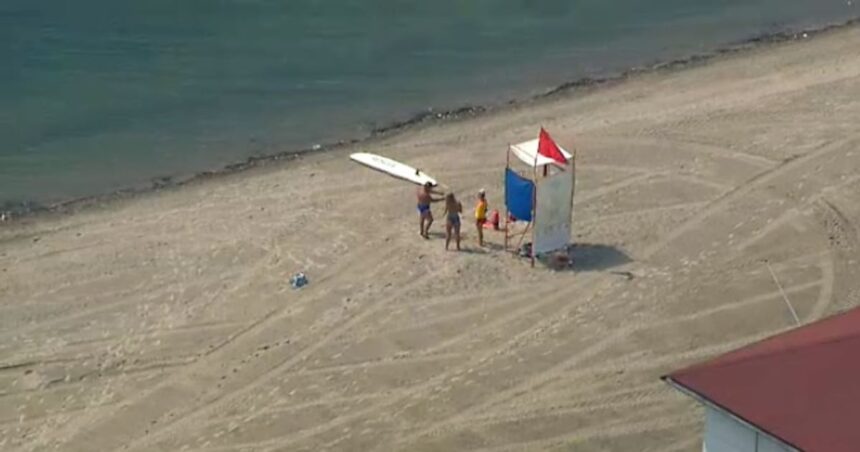Article – Toronto’s summer beach season faces its first significant hurdle as city officials have issued swimming advisories at two popular waterfront destinations due to elevated E.coli levels. As someone who’s covered Toronto’s waterfront developments for nearly a decade, I’ve observed these seasonal challenges become increasingly common, though this year’s early warning signals potential concerns for the upcoming peak swimming months.
According to the latest water quality reports from Toronto Public Health, Sunnyside Beach and Marie Curtis Beach currently show E.coli concentrations exceeding the safe swimming threshold of 100 E.coli per 100 milliliters of water. The most recent testing revealed counts of approximately 142 and 178 respectively at these locations.
“We implement a rigorous water testing protocol throughout the swimming season,” explains Dr. Eileen de Villa, Toronto’s Medical Officer of Health. “When bacterial counts exceed provincial safety guidelines, we immediately alert the public to prevent potential illness.”
The elevated bacterial levels typically result from a combination of factors, including recent heavy rainfall washing contaminants into the lake and warmer water temperatures creating favorable conditions for bacterial growth. The city experienced significant precipitation last week, which likely contributed to the current situation.
Swimming in contaminated water puts beachgoers at risk for various health issues including gastrointestinal illness, skin rashes, eye infections, and ear infections. Children, elderly individuals, and those with compromised immune systems face heightened risk.
Walking along Sunnyside yesterday morning, I noticed the red warning flags prominently displayed, though several families were still enjoying the sand while avoiding the water. Local resident Miranda Thompkins told me she brings her children to the beach weekly during summer. “We’re disappointed about the swimming advisory, but we appreciate knowing when it’s not safe. We’ll stick to building sandcastles today.”
Toronto operates 11 supervised beaches along its 46-kilometer shoreline, with eight currently deemed safe for swimming. The city conducts daily water testing between June and September, posting results on the SwimSafe portal and through social media channels.
Historically, Toronto’s beaches have made remarkable environmental progress. In the 1970s, swimming was frequently prohibited due to industrial pollution and inadequate wastewater management. Today, several Toronto beaches consistently earn international Blue Flag certification for meeting strict water quality standards.
Environmental advocates like Lake Ontario Waterkeeper have played crucial roles in monitoring and advocating for cleaner beaches. Their citizen science programs engage Torontonians in water quality awareness and conservation efforts.
“While occasional advisories are expected, especially after rainfall, the overall trend shows improved water quality at most Toronto beaches compared to previous decades,” notes Mark Mattson, president of Lake Ontario Waterkeeper. “Continued infrastructure investments and public awareness are essential for protecting these valuable recreational spaces.”
The Toronto and Region Conservation Authority (TRCA) has implemented various initiatives to improve beach water quality, including constructed wetlands that naturally filter stormwater before it reaches the lake.
City officials recommend checking Toronto’s SwimSafe website before heading to any beach, especially following rainfall events. The water quality status updates daily by 7:00 AM throughout the swimming season.
For those seeking water recreation while advisories remain in effect, swimming pools, splash pads, and beaches with “safe” designations offer alternatives. Woodbine, Cherry Beach, and Hanlan’s Point currently show excellent water quality readings.
The city anticipates water quality will improve at the affected beaches within 24-48 hours, assuming no additional significant rainfall occurs. Bacterial levels typically decline as UV radiation from sunlight naturally disinfects the water.
As Toronto continues developing its waterfront with projects like Port Lands revitalization, improved stormwater management infrastructure should further enhance beach water quality in coming years. These investments reflect growing recognition of the economic and social value of the city’s freshwater coastline.
For now, Toronto beachgoers should remain vigilant about water quality reports while enjoying the early summer weather responsibly.







